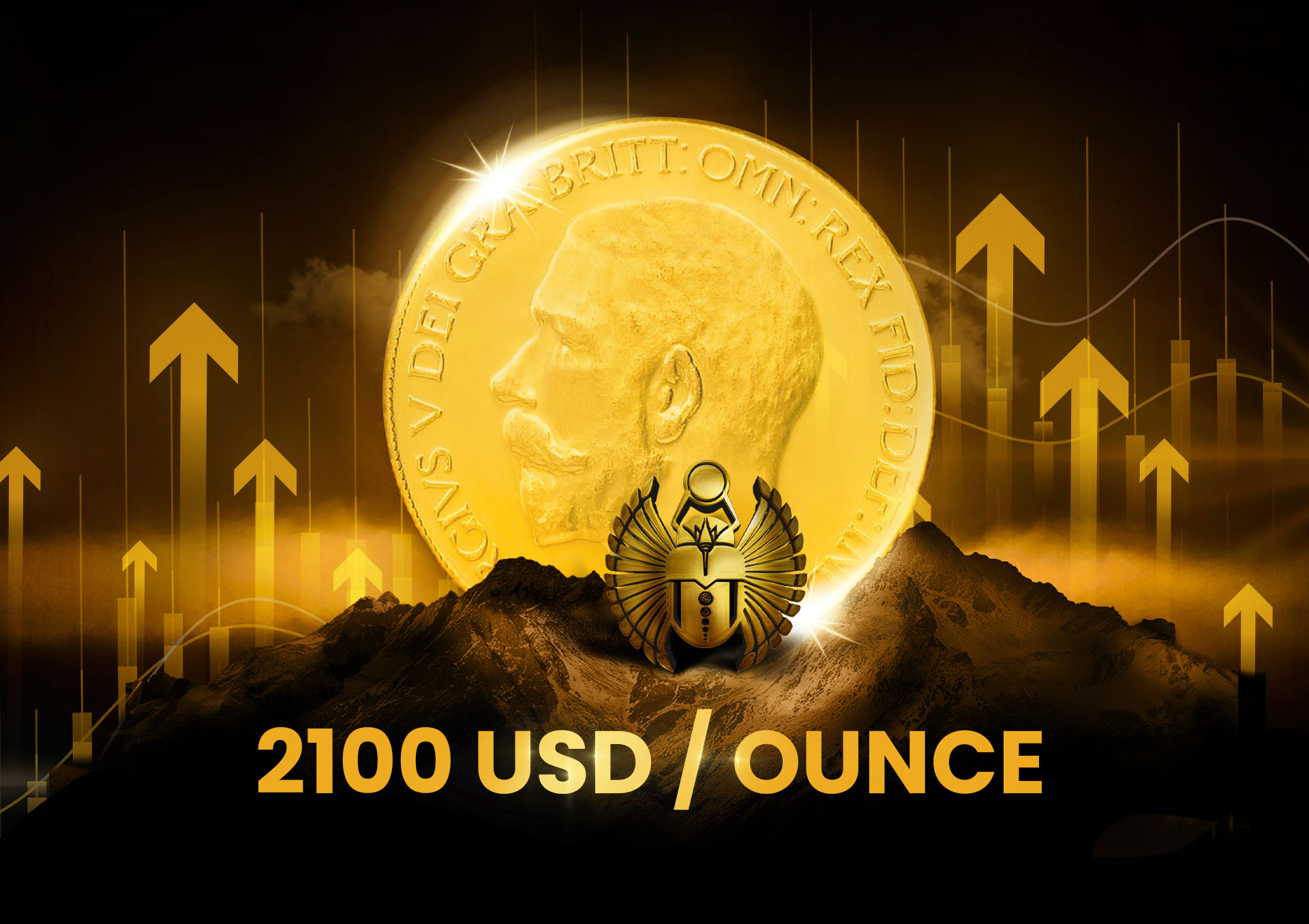Gold breaks through the $2,100 barrier. Is it preparing for new price jumps?
- Home
- Information Center by DahabMasr
- Gold breaks through the $2,100 barrier. Is it preparing for new price jumps?

Gold breaks through the $2,100 barrier. Is it preparing for new price jumps?
Dec 4, 2023
By
Dahab Masr Analytical Team
0 comment(s)
الذهب يخترق حاجز الـ ٢١٠٠ دولار. هل يستعد لقفزات سعرية جديدة؟
في تطور لافت، سجلت أسعار الذهب ارتفاعاً ملحوظاً و قوياً، حيث بلغت قيمة الأونصة ٢١٣٥ دولار أمريكي في ٤ ديسمبر ٢٠٢٣، قبل أن تتراجع فى خلال ساعات قليلة لتستقر في نطاق الـ ٢٠٦٠ دولار.
هذا الارتفاع جاء استجابة لعدة عوامل رئيسية، أبرزها تراجع مؤشر الدولار الأمريكي والتوقعات المستمرة بأن البنك الفيدرالي قد يعدل سياسته النقدية بخفض أسعار الفائدة في النصف الأول من عام ٢٠٢٤.
حيث تأتي هذه التغييرات في أعقاب تباطؤ بيانات التضخم الأمريكية، تعزز الإقبال على الذهب كأصل استثماري آمن وموثوق، خاصة في ظل الصراعات الجارية في منطقة الشرق الأوسط وأوروبا.
و لم تكن هذه الزيادة استثناءاً أو صدفة، فهى تأتي كامتداد لتحركات سابقة و متعاقبة، حيث شهد الذهب في مساء يوم الجمعة ١ ديسمبر٢٠٢٣ ارتفاعاً إلى مستويات قياسية بلغت ٢٠٧٠ دولاراً للأونصة، مستفيداً من تراجع مؤشر الدولار وتباطؤ بيانات التضخم الأمريكية، مما عزز التوقعات بتعديل سياسة البنك الفيدرالي الأمريكي. وقد أثرت هذه التغيرات بشكل مباشر على السوق المصري، حيث شهدت أسعار الذهب محلياً ارتفاعاً ملحوظاً، مع تجاوز سعر الجرام لعيار الـ ٢١ حاجز الـ ٢٨٠٠ جنيه مصري.
فسوق الذهب المصرى يتأثر بعدة عوامل خارجية و داخلية، من أهمها "العرض والطلب، سياسات البنك الفيدرالى الأمريكى، الأحداث الجيوسياسية، والسياسات الاقتصادية "، حيث تعتبر التقلبات السعرية في سوق الذهب، مؤشراً على الأوضاع الاقتصادية والجيوسياسية الراهنة.
يبدو أن هذه القفزة في أسعار الذهب لم تأتِ كمفاجأة غير متوقعة لجميع المحللين والخبراء؛ ففي لقاء للدكتور فادي كامل، المدير التنفيذي و رئيس المحللين لدى شركة "ذهب مصر" مع قناة الشرق بتاريخ ٢٧ أبريل ٢٠٢٣، توقع أن الذهب قد يتخطى حاجز الـ ٢١٠٠ دولار فى نهاية العام، مؤكداً أن قرار شراء أو بيع الذهب يعتمد على نظرة المستثمر للذهب كأصل استثماري، مشيراً إلى أهمية اعتبار الذهب استثمار طويل الأجل، وتشجيع الاستثمار فيه كأداة للتحوط بدلاً من المضاربة أو تحقيق أرباح سريعة.
ومن خلال تقديرات فريق خبراء "ذهب مصر"، فمن المتوقع أن يتخطى المعدن الأصفر حاجز ال٢٢٠٠ دولار قبل نهاية الربع الثاني من عام ٢٠٢٤، حيث تظهر هذه التوقعات الثقة في استدامة ارتفاع أسعار الذهب في المستقبل القريب، مما يشجع على الاستثمار فيه واتخاذه كوسيلة للتحوط والاستثمار طويل الأجل، الأمر الذى يعلل تقرير (مجلس الذهب العالمى - WGC)، الذي يظهر عزم ٢٤% من كل البنوك المركزية من زيادة احتياطيات من الذهب لديها في الأشهر الاثني عشر المقبلة، خصوصاً مع تزايد تشاؤمها بشأن الدولار الأميركي.



 EN
EN